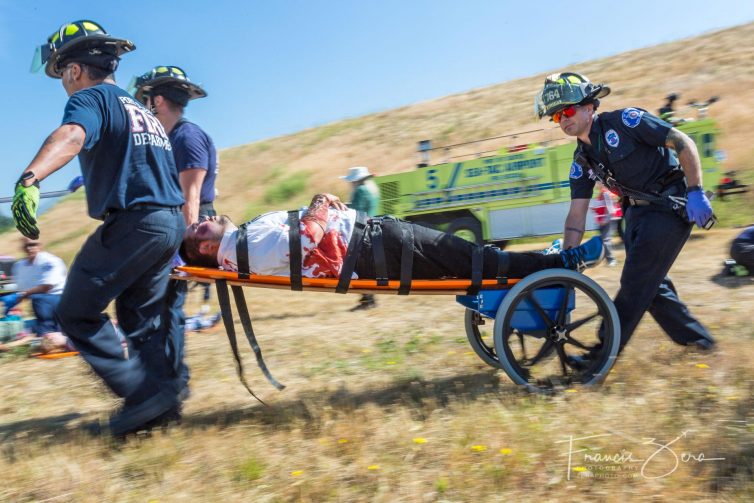
Firefighters from the Port of Seattle transport a simulated casualty during the airport’s recent triennial disaster drill
The FAA requires airports to conduct a comprehensive disaster drill every three years. On July 12, Seattle-Tacoma International Airport (SEA) did its thing, and it was quite a sight.
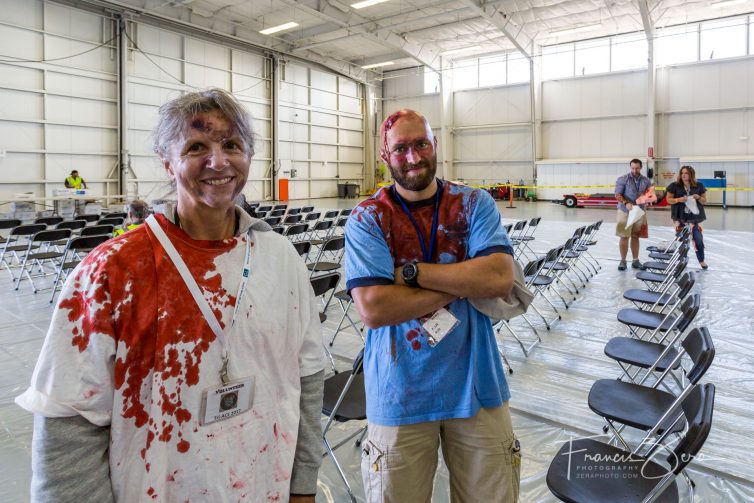
Volunteer “victims” hung out in a comfortable hangar, waiting for the drill to begin
Volunteer victims included employees of the airport, several airlines, airfield support companies, the FAA, and the TSA. They received elaborate makeup at a remote hangar in order to maximize the realism of the drill.
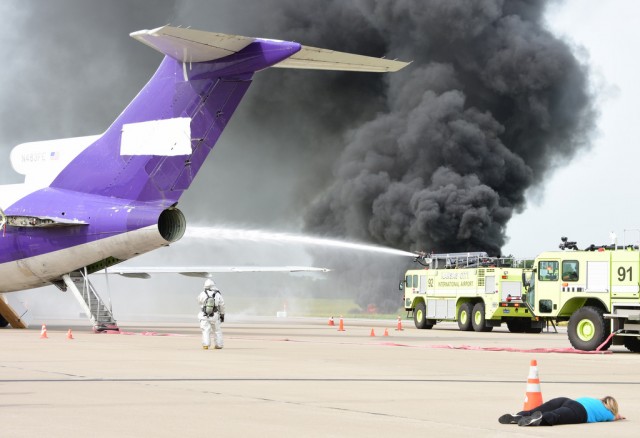
Full-scale disaster drill at Kansas City International, in full swing – Photo: JL Johnson | AirlineReporter
Practice makes perfect. And in the realm of aviation safety drills, it also creates incredible experiences for willing volunteers. Kansas City International Airport (MCI, or KCI as it’s referred to by the locals) recently hosted their triennial emergency exercise, and I was fortunate enough to score a role as a victim. I was told this was a full-scale drill from the beginning, but wasn’t sure exactly what to expect.
The closest I’ve ever been to anything remotely resembling an emergency was on my very first Airbus A320 flight just a few years ago from Minneapolis (MSP) to Pittsburgh (PIT). It was late, and after a typical approach the engines roared and we were on steep climb. Upon leveling off, the Delta captain came on to tell us we had briefly “lost steering.” After a missed approach and a fly-by, we landed uneventfully, were greeted by an ARFF (aircraft rescue and firefighting) escort, and towed to the gate. This experience, plus participating in some rudimentary safety training with Delta during last year’s #InsideDelta event, formed the foundation for my expectations.
I would soon learn I had no idea how disasters really play out, especially on the ground’¦
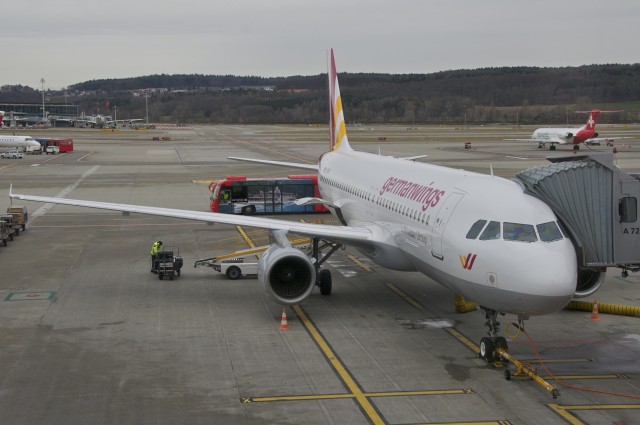
This is the Germanwings Airbus A320 (D-AIPX) involved in the crash, seen on 3/14/15 at Zurich Airport – Photo: Aero Icarus | Flickr CC
Today, a Germanwings Airbus A320 (registration D-AIPX) crashed in the Alps in southeastern France. The aircraft was carrying 144 passengers and six crew members and there are no survivors. The flight left at about 10:01am local time from Barcelona and was on its way to Dusseldorf. The crash happened near the village of Prads-Haute-Bleaone, at an altitude of about 6,550 feet. The search will be difficult, since the plane crashed in a remote, mountainous area.
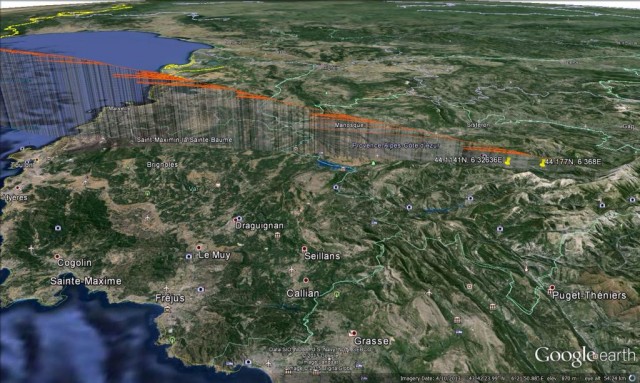
The descent of flight 9525 – Image: Google Earth | @GueardedDon
According to FlightAware, it appears that flight 9525 descended in a controlled manner from 38,000 feet at 1500 to 4000 fpm. The aircraft hit cruise altitude at about 10:45am and then started descent at 10:46am and lost contact with Air Traffic Control (ATC) at about 10:53am.
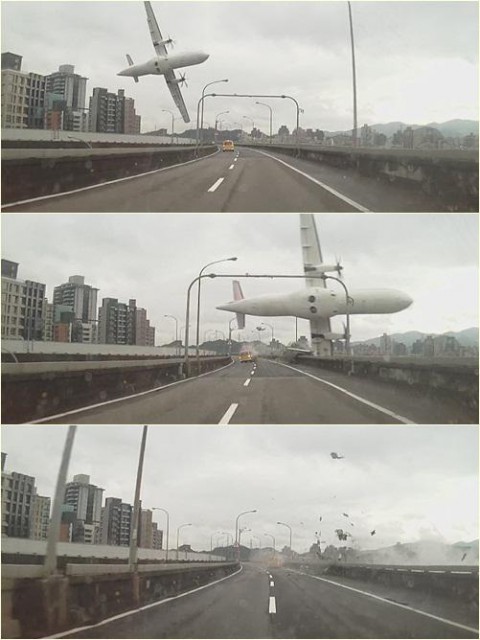
A TransAsia ATR crashes – Photo: @Missxoxo168
UPDATE 2/4/15 7:00AM PST: The Associated Press is reporting that the death toll from the accident has risen to 25, with 18 people still unaccounted for. Per civil aviation authorities in Taiwan, the pilot had logged nearly 5,000 flight hours. The cockpit voice recorder and flight data recorder (“Black Boxes”) have been recovered, which should assist authorities in determining the cause(s) of the crash.
ORIGINAL STORY:
TransAsia Flight 235 (GE235), an ATR72-600, has crashed during takeoff while en route from Taipei Sung Shan (TSA) to Kinmen Shang-Yi Airport (KNH), in the Fujian Province. The aircraft, reg# B-22816, was only 10 months old at the time of the crash.
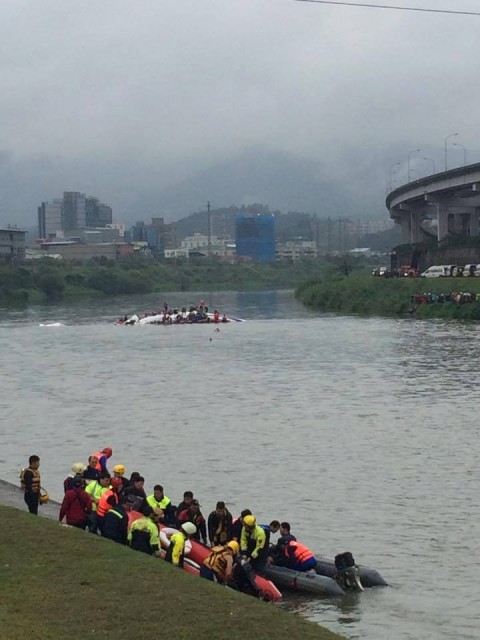
Rescuers and passengers can be seen on the bank with the TransAsia ATR72 in the background – Photo: Yung Jen
Video and photos show the aircraft at a steep angle flying over an overpass and then into the Keelung River. At the time of this update, there have been three reported passenger deaths with another few injured.
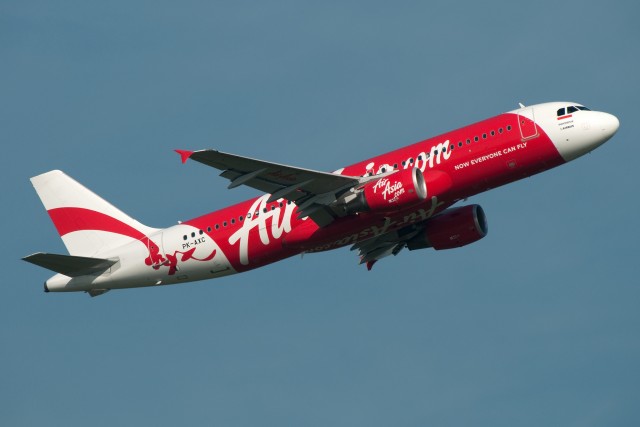
The AirAsia Airbus A320 in question (PK-AXC) seen here in 2010. On December 28, 2014, this plane would be used on AirAsia Flight QZ8501 that has now been confirmed crashed – Photo: Bruno Geiger | Flickr CC
On December 28th, at 6:12 am local time, Indonesia AirAsia flight QZ8501, traveling from Surabaya, Indonesia to Singapore, went missing over the Java Sea. On Tuesday the 30th, wreckage of the plane was discovered in the general area where the last known location was, confirming that QZ8501 had crashed.
The aircraft involved was an Airbus A320-216 registered PK-AXC. Contact was lost with the flight as it was climbing to a higher altitude to avoid weather, which is a standard operating procedure.
There were 155 passengers and seven crew. The cause of crash will likely not be known for quite some time still.
This story will be updated as new information is received. Last updated 12/30/2014 6:40am PST.
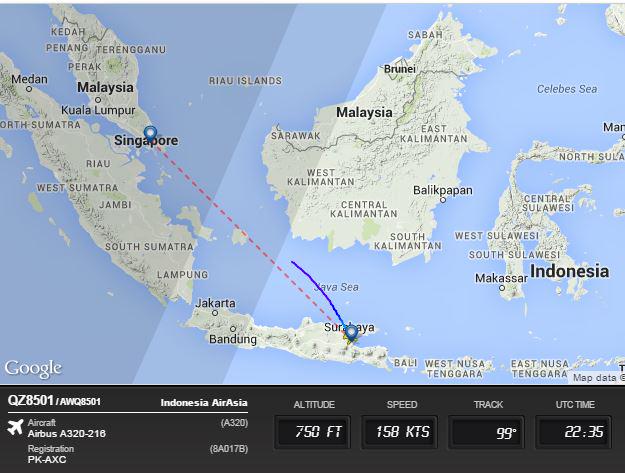
Route map of QZ8501 showing it disappearing somewhere over the Java Sea – via Jason Rabinowitz on FlightRadar24
AirAsia Flight QZ8501 Updates
12/30 7:20am PST: The worst has been confirmed, flight AirAsia flight QZ8501 crashed into the Java Sea and officials have found wreckage and the remains of passengers on board. They discovered the wreckage about 100nm southwest of Pangkalan Bun in Borneo. Rescuers will continue to search for bodies, wreckage, and of course the flight data recorder (aka black boxes). The black boxes and parts of the fuselage have technologies so rescuers can more easily discover them.
According to aviation journalist Jason Rabinowitz, the fuselage has Emergency Locator Transmitters (ELTs), which are used to find debris above water and Underwater Locator Beacons (ULBs), which are located with the boxes, are used when they are underwater. “Every commercial aircraft has multiple location technologies on board,” Rabinowitz explained to AirlineReporter. “ELTs are located in several spots on the aircraft. These transmitters emit a signal that can be received by other aircraft, boats, or even satellites. However, they do not work once submerged in water.”
“Attached to each black box is an ULB. These beacons are activated once in water and emit a ping over a very specific radio frequency. The ULB has a very short range, and must be picked up by boats passing over the area. The battery typically lasts for around 30 days.”
AirAsia has released another statement:
SURABAYA, 30TH DECEMBER 2014 ’“ AirAsia Indonesia regrets to inform that The National Search and Rescue Agency Republic of Indonesia (BASARNAS) today confirmed that the debris found earlier today is indeed from QZ8501, the flight that had lost contact with air traffic control on the morning of 28th.
The debris of the aircraft was found in the Karimata Strait around 110 nautical miles south west from Pangkalan Bun. The aircraft was an Airbus A320-200 with the registration number PK-AXC. There were 155 passengers on board, with 137 adults, 17 children and 1 infant. Also on board were 2 pilots, 4 cabin crews and one engineer.
At the present time, search and rescue operations are still in progress and further investigation of the debris found at the location is still underway. AirAsia Indonesia employees have been sent to the site and will be fully cooperating with BASARNAS, National Transportation Safety Committee (NTSC), and relevant authorities on the investigation.
Sunu Widyatmoko, Chief Executive Officer of AirAsia Indonesia said: ’œWe are sorry to be here today under these tragic circumstances. We would like to extend our sincere sympathies to the family and friends of those on board QZ8501. Our sympathies also go out to the families of our dear colleagues.’
Tony Fernandes, Group Chief Executive Officer of AirAsia added: ’œI am absolutely devastated. This is a very difficult moment for all of us at AirAsia as we await further developments of the search and rescue operations but our first priority now is the wellbeing of the family members of those onboard QZ8501.’








